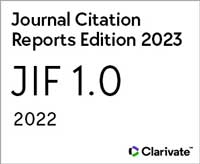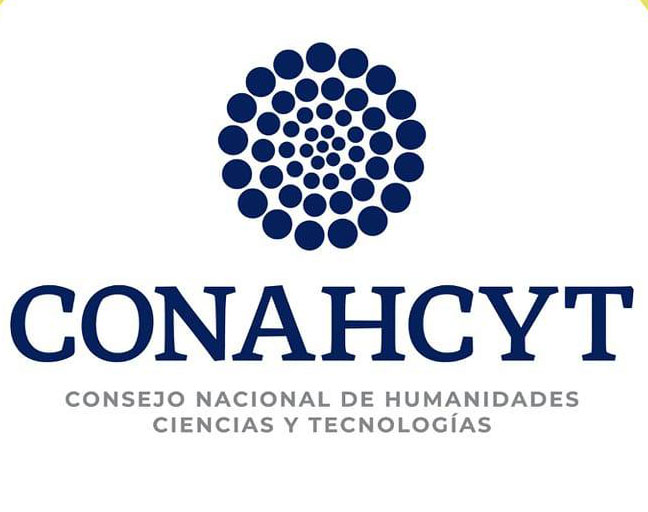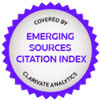Violencia contra migrantes: comprensión del crimen organizado más allá de la violencia
Violence against migrants: understanding organized crime beyond violence
https://doi.org/10.21670/ref.2306117
Palabras clave:
tráfico de migrantes, crimen organizado, militarización, violencia contra migrantes, asimetríaResumen
Este artículo busca explicar por qué hay más violencia contra migrantes y transportistas en algunas regiones que en otras. Para esto, se compararon el ecosistema criminal (número y tipo de actores criminales en un territorio) y la resiliencia estatal (capacidad de un Estado para tomar medidas de combate contra el crimen organizado) en el Golfo del Urabá (Colombia) y Agadez (Níger), y se ofrece evidencia de otras cinco subregiones entre 2015 y 2022 utilizando datos del índice del crimen organizado del Global Initiative Against Transnational Organized Crime. Se encontró que la violencia es un recurso del que tienen más incentivos los grupos jerárquicamente organizados para utilizar contra migrantes y transportistas que aquellos grupos criminales más pequeños o pobremente organizados. La hipótesis apunta únicamente a la violencia contra migrantes y transportistas. Más trabajo debe ser hecho para abordar otras formas de violencia del crimen organizado.Abstract This article seeks to explain why there is more violence against migrants and transporters in some regions than in others. We compare the criminal ecosystem (number and type of criminal actors in a territory) and state resilience (a state’s capacity to take measures to combat organized crime) in the Gulf of Urabá (Colombia) and Agadez (Niger), and provide evidence from five other subregions between 2015 and 2022 using data from the Global Initiative Against Transnational Organized Crime’s organized crime index. We found that violence is a resource that hierarchically organized groups have more incentive to use against migrants and transporters than smaller or poorly organized criminal groups. The hypothesis targets only violence against migrants and transporters. More work needs to be done to address other forms of organized criminal violence.
Citas
Abebe, T. T. (2019, diciembre). Securitisation of migration in Africa: the case of Agadez in Niger. ISS Africa Report, 20. https://issafrica.s3.amazonaws.com/site/uploads/ar20.pdf
Adesina, O. S. (2014). Modern day slavery: poverty and child trafficking in Nigeria. African Identities, 12(2), 165-179. https://doi.org/10.1080/14725843.2014.881278 DOI: https://doi.org/10.1080/14725843.2014.881278
Agwanda, B. (2022). Securitization and forced migration in Kenya: a policy transition from integration to encampment. Population and Development Review, 48(3), 723-743. https://doi.org/10.1111/padr.12483 DOI: https://doi.org/10.1111/padr.12483
Ahedo, M. (2020). Más allá de la seguridad y la resiliencia. Hacia la intervención civil y el empoderamiento autógeno de las sociedades para construir su paz, y su prosperidad. Relaciones Internacionales, (43), 49-67. https://doi.org/10.15366/relacionesinternacionales2020.43.003 DOI: https://doi.org/10.15366/relacionesinternacionales2020.43.003
Ajayi, L. A., Ajayi, A. O., Folarin, S. F., Tiamiyu, A. O., Nnajidema, C. E. & Ogunnowo, O. E. (2020). African migrant narratives, modern slavery, and human rights violations in Libya. En N. Okorie & B. Ojebuyi (Eds.), Handbook of research on the global impact of media on migration issues (pp. 48-67). IGI Global. DOI: https://doi.org/10.4018/978-1-7998-0210-5.ch004
Alarcón Gil, C. (2018, 22 de enero). La Operación Agamenón y el debilitamiento relativo del Clan del Golfo. Razón Pública. https://razonpublica.com/la-operacion-agamenon-y-el-debilitamiento-relativo-del-clan-del-golfo/
Albarrán-Torres, C. (2021). Global trafficking networks on film and television: Hollywood’s cartel wars. Routledge. DOI: https://doi.org/10.4324/9781003024217
Alioua, M. (2013). Le Maroc, un carrefour migratoire pour les circulations euro-africaines? Hommes et Migrations, (1303), 138-145. https://doi.org/10.4000/hommesmigrations.2572 DOI: https://doi.org/10.4000/hommesmigrations.2572
Álvarez Calderón, C. E. & Rodríguez Beltrán, C. A. (2018). Ecosistemas criminales: hábitats para la convergencia y la globalización desviada. Revista Científica General José María Córdova, 16(24), 1-30. http://dx.doi.org/10.21830/19006586.352 DOI: https://doi.org/10.21830/19006586.352
Arreguin-Toft, I. (2001, verano). How the weak win wars: a theory of asymmetric conflict. International security, 26(1), 93-128. http://www.jstor.org/stable/3092079 DOI: https://doi.org/10.1162/016228801753212868
Badillo, R. & Bravo, A. (2020). Crimen transnacional organizado y migración: el Clan del Golfo y grupos delictivos en América Latina y África. Internacia: Revista de Relaciones Internacionales, (1), 1-32. https://revistas.pucp.edu.pe/index.php/internacia/article/view/21834
Bailey, J. & Taylor, M. M. (2009). Evade, corrupt, or confront? Organized crime and the State in Brazil and Mexico. Journal of Politics in Latin America, 1(2), 3-29. https://journals.sub.uni-hamburg.de/giga/jpla/article/view/38/ DOI: https://doi.org/10.1177/1866802X0900100201
Ballvé, T. (2020). The frontier effect. State formation and violence in Colombia. Cornell University Press. DOI: https://doi.org/10.7591/cornell/9781501747533.001.0001
Ballvé, T. (2021). The drug-conflict nexus: resilience as organized crime. International Journal of Drug Policy, 89, Artículo 103084. https://doi.org/10.1016/j.drugpo.2020.103084 DOI: https://doi.org/10.1016/j.drugpo.2020.103084
Bejarano, A. M. (1988). La violencia regional y sus protagonistas: el caso de Urabá. Análisis político, (4), 43-54. https://revistas.unal.edu.co/index.php/anpol/article/view/74103
Berdal, M. & Serrano, M. (2005). Introducción. En M. R. Berdal & M. Serrano (Coords.), Crimen transnacional organizado y seguridad internacional: cambio y continuidad (pp. 13-26). Fondo de Cultura Económica.
Berglund, C. & Souleimanov, E. A. (2020). What is (not) asymmetric conflict? From conceptual stretching to conceptual structuring. Dynamics of Asymmetric Conflict, 13(1), 87-98. https://doi.org/10.1080/17467586.2019.1680855 DOI: https://doi.org/10.1080/17467586.2019.1680855
Bøås, M. (2021). EU migration management in the Sahel: unintended consequences on the ground in Niger? Third World Quarterly, 42(1), 52-67. https://doi.org/10.1080/01436597.2020.1784002 DOI: https://doi.org/10.1080/01436597.2020.1784002
Bourbeau, P. (2015). Migration, resilience, and security: responses to new inflows of asylum seekers and migrants. Journal of Ethnic and Migration Studies, 41(12), 1958-1977. https://doi.org/10.1080/1369183X.2015.1047331 DOI: https://doi.org/10.1080/1369183X.2015.1047331
Brachet, J. (2005). Migrants, transporteurs et agents d’etat: rencontre sur l’axe Agadez-Sebha. Autrepart, (36), 43-62. http://horizon.documentation.ird.fr/exl-doc/pleins_textes/autrepart3/010035954.pdf DOI: https://doi.org/10.3917/autr.036.0043
Cae en aguas internacionales narcosumergible con dos toneladas de cocaína. (2021, 5 de febrero). Semana. https://www.semana.com/nacion/articulo/cae-en-aguas-internacionales-un-narcosumergible-con-dos-toneladas-de-cocaina/202150/
Caen siete integrantes de banda dedicada al tráfico de migrantes en el Urabá. (2020, 29 de septiembre). Noticias Caracol. https://noticias.caracoltv.com/antioquia/caen-siete-integrantes-de-banda-dedicada-al-trafico-de-migrantes-en-el-uraba
Castillo, J. C. & Kronick, D. (2020). The logic of violence in drug war. American Political Science Review, 114(3), 874-887. http://doi.org/10.1017/S0003055420000246. DOI: https://doi.org/10.1017/S0003055420000246
Chamberlain, E. J. R. (2003). Asymmetry: what is it and what does it mean for the British armed forces? Defence Studies, 3(1), 17-43. https://doi.org/10.1080/14702430308405050 DOI: https://doi.org/10.1080/14702430308405050
Chandler, D. (2015). Rethinking the conflict-poverty nexus: from securitising intervention to resilience. Stability: International Journal of Security and Development, 4(1), 1-14. http://doi.org/10.5334/sta.fb DOI: https://doi.org/10.5334/sta.fb
Las cifras de Agamenón, la operación más grande contra el crimen colombiano. (2018, 26 de febrero). Semana. https://www.semana.com/nacion/articulo/balance-de-la-operacion-agamenon-contra-el-clan-del-golfo/558357/
El CLIP. (2020, 28 de mayo). Darién, cuando la muerte es una opción de libertad para los migrantes [Video]. YouTube. https://www.youtube.com/watch?v=A_FLv8nwIaY&feature=emb_logo
Convención de las Naciones Unidas contra la Delincuencia Organizada Transnacional. 2000, 15 de noviembre. https://www.unodc.org/pdf/crime/a_res_55/res5525s.pdf
Correa-Cabrera, G. & Schaefer, K. B. (2022). Notes on a perilous journey to the United States: irregular migration, trafficking in persons, and organized crime. Latin American Politics and Society, 64(3), 142-160. http://doi.org/10.1017/lap.2022.15 DOI: https://doi.org/10.1017/lap.2022.15
Los coyotes de la muerte: obligaban a migrantes a pasar droga hasta Panamá. (2018, 22 de febrero). Semana. https://www.semana.com/mundo/articulo/trafico-de-personas-los-coyotes-de-la-muerte/557943
Cross, H. (2020). The Burkina Faso-Côte d’Ivoire migration corridor. En T. Bastia & R. Skeldon (Eds.), Routledge handbook of migration and development (468-472). Routledge. DOI: https://doi.org/10.4324/9781315276908-44
Cruz, J. M. & Durán-Martínez, A. (2016). Hiding violence to deal with the state: criminal pacts in El Salvador and Medellin. Journal of Peace Research, 53(2), 197-210. https://doi.org/10.1177/0022343315626239 DOI: https://doi.org/10.1177/0022343315626239
Daniele, G. & Dipoppa, G. (2022). Fighting organized crime by targeting their revenue: screening, mafias, and public funds. The Journal of Law, Economics, and Organization, Artículo ewac002. https://doi.org/10.1093/jleo/ewac002 DOI: https://doi.org/10.1093/jleo/ewac002
Dauchy, A. (2022, 2 de junio). Les arrestations de passeurs au Niger: une criminalisation des pratiques d’entraide en situation de migration. Métropolitiques. https://metropolitiques.eu/Les-arrestations-de-passeurs-au-Niger-une-criminalisation-des-pratiques-d.html
Davis, D. E. (2012). Urban resilience in situations of chronic violence. United States Agency for International Development/Massachusetts Institute of Technology. https://cis.mit.edu/sites/default/files/documents/urbanresiliencereport2012_2.pdf
De la Rosa Rodríguez, P. (2022). La guerra contra las drogas, incentivo colateral de los criminales para delinquir contra inmigrantes indocumentados en México. Estudios Fronterizos, 23, Artículo e089. https://doi.org/10.21670/ref.2205089 DOI: https://doi.org/10.21670/ref.2205089
De Tessières, S. (2018). At the crossroads of Sahelian conflicts: insecurity, terrorism, and arms trafficking in Niger. Small Arms Survey. https://www.smallarmssurvey.org/sites/default/files/resources/SAS-SANA-Report-Niger.pdf
Díaz de Aguilar Hidalgo, I. (2018, 15 de enero). The Niger-Libya migration route. An odyssey shaped by Saharan connections and European fears, 2000-2017 (Framework document 01/2018). Instituto Español de Estudios Estratégicos. http://www.ieee.es/en/Galerias/fichero/docs_marco/2018/DIEEEM01-2018_Migraciones_Europa_Niger-Libia_IreneDiazdeAguilar_ENGLISH.pdf
Dunn Cavelty, M., Kaufmann, M. & Søby Kristensen, K. (2015). Resilience and (in)security: Practices, subjects, temporalities. Security Dialogue, 46(1), 3-14. https://doi.org/10.1177/0967010614559637 DOI: https://doi.org/10.1177/0967010614559637
European Union Agency for Law Enforcement Cooperation (Europol). (s. f.). Facilitation of illegal immigration. https://www.europol.europa.eu/crime-areas-and-trends/crime-areas/facilitation-of-illegal-immigration
European Union Agency for Law Enforcement Cooperation (Europol). (2021, 6 de diciembre). Criminal networks involved in the trafficking and exploitation of underage victims in the EU. https://www.europol.europa.eu/publications-documents/criminal-networks-involved-in-trafficking-and-exploitation-of-underage-victims-in-eu
Feldmann, A. E. & López, M. (2022, abril). Repertoires of terrorism in Mexico’s criminal war. Perspectives on Terrorism, 16(2), 4-13. https://www.jstor.org/stable/27123177
Finckenauer, J. O. (2005). Problems of definition: what is organized crime? Trends in Organized Crime, 8(3), 63-83. https://doi.org/10.1007/s12117-005-1038-4 DOI: https://doi.org/10.1007/s12117-005-1038-4
Flores-Macías, G. (2018). The consequences of militarizing anti-drug efforts for State capacity in Latin America: evidence from Mexico. Comparative Politics, 51(1), 1-20. https://doi.org/10.5129/001041518824414647 DOI: https://doi.org/10.5129/001041518824414647
Flores-Macías, G. A. & Zarkin, J. (2021). The militarization of law enforcement: evidence from Latin America. Perspectives on Politics, 19(2), 519-538. https://doi.org/10.1017/S1537592719003906 DOI: https://doi.org/10.1017/S1537592719003906
Global Initiative Against Transnational Organized Crime. (2021a). Global organized crime index. 2021. https://globalinitiative.net/wp-content/uploads/2021/09/GITOC-Global-Organized-Crime-Index-2021.pdf
Global Initiative Against Transnational Organized Crime. (2021b). Niger profile. Institute for Security Studies/Interpol/Global Initiative Against Transnational Organized Crime.
Hasenclever, A., Mayer, P. & Rittberger, V. (1997). Theories of international regimes. Cambridge University Press. DOI: https://doi.org/10.1017/CBO9780511521720
Hoffmann, A., Meester, J. & Nabara, H. M. (2017). Migration and markets in Agadez: economic alternatives to the migration industry (CRU Report). Netherlands Institute of International Relations “Clingendael”. https://www.clingendael.org/sites/default/files/2017-10/Migration_and_Markets_Agadez.pdf
International Organization for Migration (IOM). (2008). Irregular migration from West Africa to the Maghreb and the European Union: an overview of recent trends (IOM migration research series, no. 32). https://publications.iom.int/system/files/pdf/mrs-32_en.pdf
International Organization for Migration (IOM). (2016). Final Evaluation: Agami Project. https://returnandreintegration.iom.int/sites/g/files/tmzbdl341/files/documents/IOM%2C%20AGAMI%20-%20Agadez%20Migration%20Project%2C%202016.pdf
Izcara Palacios, S. P. & Andrade Rubio, K. L. (2022). Migración y violencia: las caravanas de migrantes centroamericanos. Revista Colombiana de Sociología, 45(2), 91-115. https://doi.org/10.15446/rcs.v45n2.95765 DOI: https://doi.org/10.15446/rcs.v45n2.95765
Jaramillo, A. M. (2007). La experiencia del desplazamiento forzado en Urabá y el oriente antioqueño (1998-2006). Controversia, (189), 148-171. https://doi.org/10.54118/controver.v0i189.154
Kenyon, P. (2010). I am justice: a journey out of Africa. Preface Publishing.
Kupka, P., Walach, V. & Divišová, V. (2022). From legal definitions to ethnic identities: representations of organized crime in Czech policy documents. Trends in Organized Crime, 1-22. https://doi.org/10.1007/s12117-022-09449-y DOI: https://doi.org/10.1007/s12117-022-09449-y
Lalić, V. & Ćeranić, P. (2019). Securitization of migration in European Union and the role of private security firms. Dialogues Security, 10(1), 47-61. https://doi.org/10.47054/SD1910047l DOI: https://doi.org/10.47054/SD1910047l
Lessing, B. (2017). Making peace in drug wars: Crackdowns and cartels in Latin America. Cambridge University Press. DOI: https://doi.org/10.1017/9781108185837
Lucht, H. (2022). EU-driven border control in Niger: from migrants to gold, drugs, and rare animals. Cultural Anthropology, 37(1), 16-22. https://doi.org/10.14506/ca37.1.03 DOI: https://doi.org/10.14506/ca37.1.03
Magaloni, B., Franco-Vivanco, E. & Melo, V. (2020). Killing in the Slums: social order, criminal governance, and police violence in Rio de Janeiro. American Political Sciences Review, 114(2), 552-572. https://doi.org/10.1017/S0003055419000856 DOI: https://doi.org/10.1017/S0003055419000856
Martínez, M. P. (2022, 2 de julio). La travesía de cruzar el Tapón del Darién: “Traté de que mi hijo no viera los cadáveres, pero no se pudo”. Mundiario. https://www.mundiario.com/articulo/sociedad/travesia-tapon-darien-trate-que-hijo-viera-cadaveres-pudo/20220702082534245669.html
Mata, N. & Herrera, J. C. (2019, 19 de febrero). Clan del Golfo tapona a migrantes en el Darién. El Colombiano. https://www.elcolombiano.com/colombia/clan-del-golfo-tapona-a-migrantes-en-el-darien-LA10238641
McCarthy-Jones, A., Doyle, C. & Turner, M. (2020). From hierarchies to networks: the organizational evolution of the international drug trade. International Journal of Law, Crime and Justice, 63, 1-11. https://doi.org/10.1016/j.ijlcj.2020.100436 DOI: https://doi.org/10.1016/j.ijlcj.2020.100436
Méndez, A. L. (2021, 5 de enero). La ofensiva para cazar a ‘Otoniel’, el narco más buscado del país. El Tiempo. https://www.eltiempo.com/justicia/conflicto-y-narcotrafico/operacion-agamenon-asi-se-prepara-la-fuerza-publica-para-capturar-a-otoniel-558705
Migrantes de Otro Mundo. (2020). Las rutas por América. http://migrantes-otro-mundo.elclip.org/rutas-por-america.html
Migration and Home Affairs. (s. f.). Organised crime & human trafficking. European Commission. https://home-affairs.ec.europa.eu/policies/internal-security/organised-crime-and-human-trafficking_en
Ministerio de Defensa Nacional. (2016). Impacto y panorama del fenómeno de tráfico de migrantes en la región de Urabá (Estudio criminológico, Ecrim no. 001). https://www.policia.gov.co/file/46573/download?token=2XeUXdkg#:~:text=La%20posici%C3%B3n%20geo%2Destrat%C3%A9gica%20del,%C3%BAltimo%20siendo%20de%20m%C3%A1s%20atenci%C3%B3n.
Molenaar, F. & El Kamouni-Janssen, F. (2017). Turning the tide. The politics of irregular migration in the Sahel and Libya (CRU Report). Netherlands Institute of International Relations “Clingendael”. https://www.clingendael.org/sites/default/files/pdfs/turning_the_tide.pdf
Moral Martín, P. (2020). El nexo seguridad-desarrollo y resiliencia como sucedáneos de la seguridad humana en las políticas de la Unión Europea: el caso de Sahel. Relaciones Internacionales, (43), 69-86. https://doi.org/10.15366/relacionesinternacionales2020.43.004 DOI: https://doi.org/10.15366/relacionesinternacionales2020.43.004
Morales Morales, S. (2018). La resiliencia en el marco del sistema de seguridad nacional. En Instituto Español de Estudios Estratégicos (Ed.), Documentos de seguridad y defensa 77. Resiliencia: del individuo al Estado y del Estado al individuo (pp. 79-108). Ministerio de Defensa de España. https://dialnet.unirioja.es/descarga/libro/707108.pdf
Morris, S. D. (2013). Drug trafficking, corruption, and violence in Mexico: mapping the linkages. Trends in Organized Crime, 16(2), 195-220. https://doi.org/10.1007/s12117-013-9191-7 DOI: https://doi.org/10.1007/s12117-013-9191-7
Oficina de las Naciones Unidas contra la Droga y el Delito (UNODC). (2012). Tráfico ilícito de migrantes: la dura búsqueda de una vida mejor. https://www.unodc.org/documents/toc/factsheets/TOC12_fs_migrantsmuggling_ES_HIRES.pdf
Oficina de las Naciones Unidas contra la Droga y el Delito (UNODC) & Migración Colombia. (2013). Dimensión del delito de tráfico de migrantes en Colombia: realidades institucionales, legales y judiciales. http://migracioncolombia.gov.co/phocadownload/Investigacion_trafico_migrantes.pdf
Oxfam Intermón. (2019, julio). Níger gendarme de Europa. Consecuencias de la externalización de fronteras en Sahel (Informe de Oxfam Intermón, núm. 52). https://cdn2.hubspot.net/hubfs/426027/Oxfam-Website/OxfamWeb-Documentos/OxfamWeb-Informes/niger-gendarme-de-europa.pdf
Pereda, V. (2022). Why Global North criminology fails to explain organized crime in Mexico. Theoretical Criminology, 26(4), 620-640. https://doi.org/10.1177/13624806221104562 DOI: https://doi.org/10.1177/13624806221104562
Pospisil, J. & Kühn, F. P. (2016). The resilient state: new regulatory modes in international approaches to state building? Third World Quarterly, 37(1), 1-16. https://doi.org/10.1080/01436597.2015.1086637 DOI: https://doi.org/10.1080/01436597.2015.1086637
Rojas, J. C. (2017, 21 de mayo). Doce horas con los hombres que cazan al “clan del Golfo” en Urabá. El Tiempo. https://www.eltiempo.com/justicia/conflicto-y-narcotrafico/asi-trabaja-la-policia-que-combate-al-clan-del-golfo-en-uraba-90540
Rojas, R. (2020). Un negocio cruel. Migrantes de Otro Mundo. https://migrantes-otro-mundo.elclip.org/un-negocio-cruel/un-negocio-cruel.html
Salhi, Y. (2020). A framework for measuring information asymmetry. Proceedings of the AAAI Conference on Artificial Intelligence, 34(3), 2983-2990. https://doi.org/10.1609/aaai.v34i03.5691 DOI: https://doi.org/10.1609/aaai.v34i03.5691
Sanchez, J. & Cruz, J. M. (2023). The dynamics of criminal cooperation between the police and gangs in Honduras. Trends in Organized Crime. https://doi.org/10.1007/s12117-023-09494-1 DOI: https://doi.org/10.1007/s12117-023-09494-1
Seery, M. D., Holman, E. A. & Silver, R. C. (2010). Whatever does not kill us: cumulative lifetime adversity, vulnerability, and resilience. Journal of Personality and Social Psychology, 99(6), 1025-1041. https://psycnet.apa.org/doi/10.1037/a0021344 DOI: https://doi.org/10.1037/a0021344
Shaw, M. & Reitano, T. (2014). The political economy of trafficking and trade in the Sahara: instability and opportunities. Sahara Knowledge Exchange/World Bank. https://globalinitiative.net/wp-content/uploads/2014/12/Shaw-Reitano-%E2%80%93-The-Political-Economy-of-Trafficking-and-Trade-in-the-Sahara-December-2014.pdf
Skarbek, D. (2011). Governance and prison gangs. American Political Science Review, 105(4), 702-716. https://doi.org/10.1017/S0003055411000335 DOI: https://doi.org/10.1017/S0003055411000335
Snyder, R. & Duran-Martínez, A. (2009). Does illegality breed violence? Drug trafficking and state-sponsored protection rackets. Crime Law and Social Change, 52(3), 253-273. https://doi.org/10.1007/s10611-009-9195-z DOI: https://doi.org/10.1007/s10611-009-9195-z
Soto, L. (2020, 20 de diciembre). El sometimiento de los 100 del Clan del Golfo está rodeado de misterio. La Silla Vacía. https://lasillavacia.com/sometimiento-los-100-del-clan-del-golfo-esta-rodeado-misterio-79600
Sylla, A. & Schultz, S. U. (2020). Commemorating the deadly other side of externalized borders through “migrant-martyrs”, sacrifices and politizations of (irregular) migration on the international migrants’ day in Mali. Comparative Migration Studies, 8(4), 1-17. https://doi.org/10.1186/s40878-019-0167-x DOI: https://doi.org/10.1186/s40878-019-0167-x
Tasseron, M. & Lawson, B. T. (2022). Legitimizing military action through statistics and discourse in the 2014 IDF assault on Gaza. Media, War & Conflict, 15(2), 238-256. https://doi.org/10.1177/1750635220917692 DOI: https://doi.org/10.1177/1750635220917692
Tinti, P. & Westcott, T. (2016, noviembre). The Niger-Libya corridor: Smugglers’ perspectives (ISS paper 299). Institute for Security Studies. https://issafrica.s3.amazonaws.com/site/uploads/paper299_2.pdf
Toft, M. D. (2014). Territory and war. Journal of Peace Research, 51(2), 185-198. https://doi.org/10.1177/0022343313515695 DOI: https://doi.org/10.1177/0022343313515695
Topulli, E. (2016). Securitization of migration and human rights in Europe. European Journal of Multidisciplinary Studies, 1(5), 86-92. https://doi.org/10.26417/ejms.v2i1.p86-92 DOI: https://doi.org/10.26417/ejms.v2i1.p86-92
Trejo, G., & Nieto-Matiz, C. (2022). Containing large-scale criminal violence through internationalized prosecution: how the collaboration between the CICIG and Guatemala’s Law Enforcement contributed to a sustained reduction in the murder rate. Comparative Political Studies. https://doi.org/10.1177/00104140221139386 DOI: https://doi.org/10.1177/00104140221139386
Trejos Rosero, L. F., Bravo Hernández, A. J. & Badillo Sarmiento, R. (2021). Hacia una comprensión de los múltiples conflictos colombianos: evolución teórica en el análisis de la confrontación armada. Co-herencia, 18(34), 119-155. https://doi.org/10.17230/co-herencia.18.34.5 DOI: https://doi.org/10.17230/co-herencia.18.34.5
United Nation Office on Drugs and Crime (UNODC). (s. f.). Trafficking in persons and migrant smuggling. https://www.unodc.org/lpo-brazil/en/trafico-de-pessoas/index.html
United Nations Office on Drug and Crime (UNODC). (2013, febrero). Transnational organized crime in West Africa: a threat assessment. https://www.unodc.org/documents/data-and-analysis/tocta/West_Africa_TOCTA_2013_EN.pdf
United Nations Office on Drug and Crime (UNODC). (2018). Global study on smuggling of migrants. https://www.unodc.org/documents/data-and-analysis/glosom/GLOSOM_2018_web_small.pdf
Víctimas de tráfico de migrantes cuentan el horror en manos del Clan del Golfo. (2018, 28 de febrero). Noticias Caracol. https://noticias.caracoltv.com/colombia/victimas-de-trafico-de-migrantes-cuentan-el-horror-en-manos-del-clan-del-golfo
Von Lampe, K. (2015). Organized crime: analyzing illegal activities, criminal structures, and extra-legal governance. Sage Publications.
Williams, P. (2008). Transnational criminal networks. En J. Arquila & D. Ronfeldt, Networks and netwars. The future of terror, crime, and militancy (pp. 61-98). National Defense Research Institute/Rand Corporation.
Wyatt, T., Van Uhm, D. & Nurse, A. (2020). Differentiating criminal networks in the illegal wildlife trade: organized, corporate and disorganized crime. Trends in Organized Crime, 23, 350-366. https://rdcu.be/c8kjb DOI: https://doi.org/10.1007/s12117-020-09385-9
Yashar, D. J. (2018). Homicidal ecologies. Illicit economies and complicit States in Latin America. Cambridge University Press. DOI: https://doi.org/10.1017/9781316823705
Zarkin, J. (2023). The silent of militarization: explaining the logic of military members’ appointment as police chiefs. Comparative Politics (fast track). https://doi.org/10.5129/001041523X16726700420784 DOI: https://doi.org/10.5129/001041523X16726700420784































